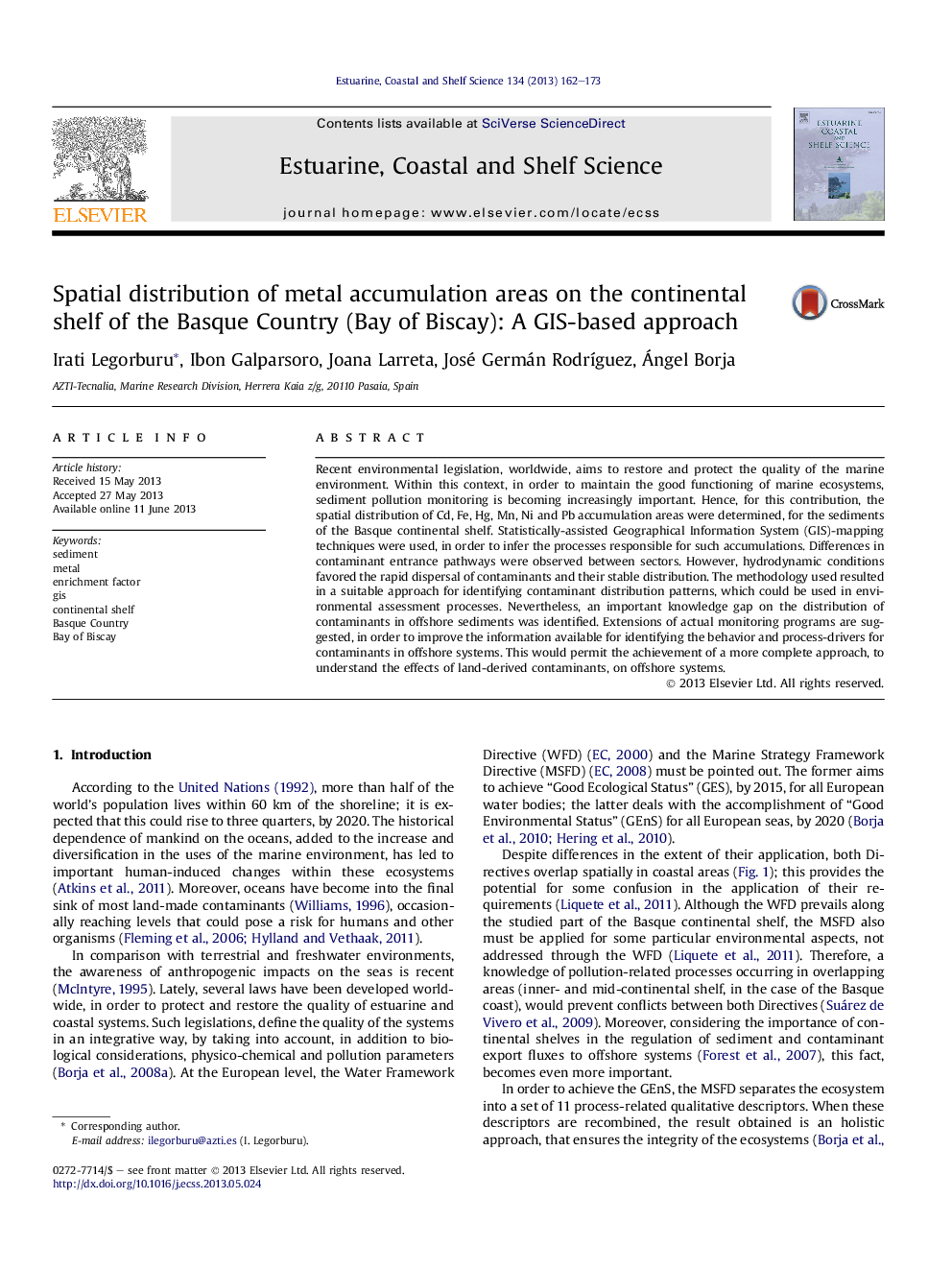| Article ID | Journal | Published Year | Pages | File Type |
|---|---|---|---|---|
| 4539745 | Estuarine, Coastal and Shelf Science | 2013 | 12 Pages |
Recent environmental legislation, worldwide, aims to restore and protect the quality of the marine environment. Within this context, in order to maintain the good functioning of marine ecosystems, sediment pollution monitoring is becoming increasingly important. Hence, for this contribution, the spatial distribution of Cd, Fe, Hg, Mn, Ni and Pb accumulation areas were determined, for the sediments of the Basque continental shelf. Statistically-assisted Geographical Information System (GIS)-mapping techniques were used, in order to infer the processes responsible for such accumulations. Differences in contaminant entrance pathways were observed between sectors. However, hydrodynamic conditions favored the rapid dispersal of contaminants and their stable distribution. The methodology used resulted in a suitable approach for identifying contaminant distribution patterns, which could be used in environmental assessment processes. Nevertheless, an important knowledge gap on the distribution of contaminants in offshore sediments was identified. Extensions of actual monitoring programs are suggested, in order to improve the information available for identifying the behavior and process-drivers for contaminants in offshore systems. This would permit the achievement of a more complete approach, to understand the effects of land-derived contaminants, on offshore systems.
